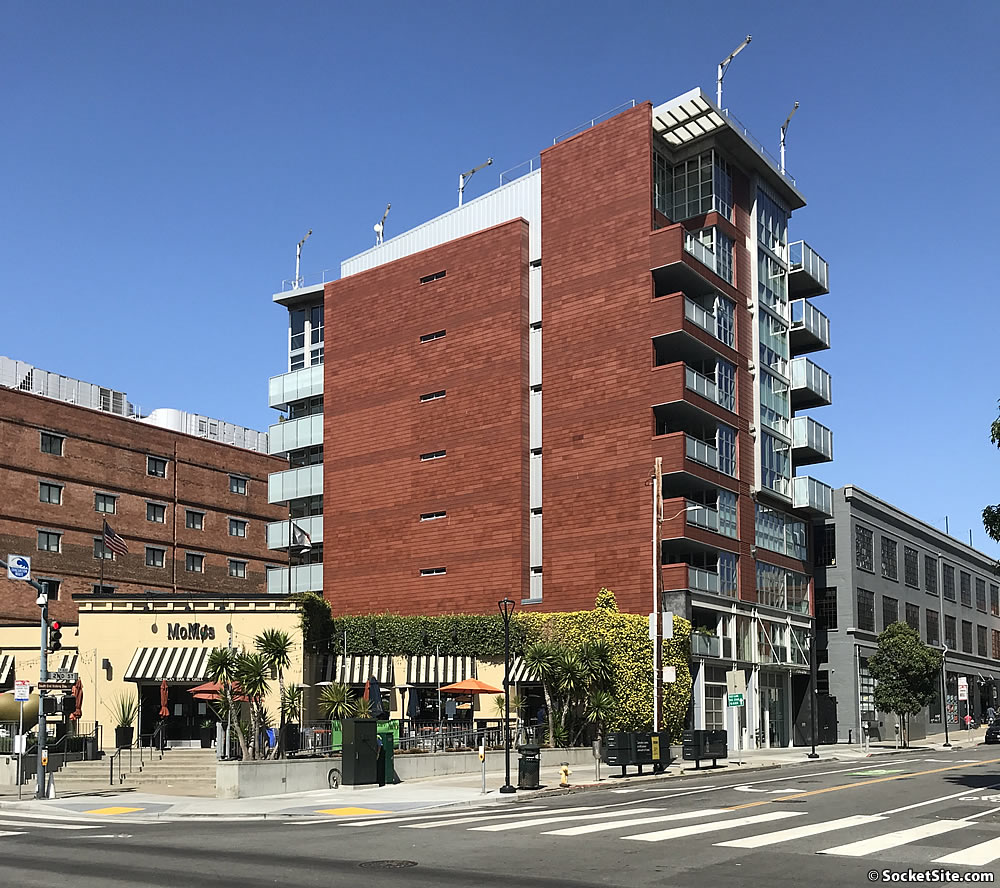Purchased for $2.75 million in November of 2015, the two-story unit #801 atop the boutique Gold Certified building at 750 2nd Street returned to the market priced at $2.995 million in May of 2019, a sale at which would have represented net appreciation of 8.9 percent or roughly 2.4 percent per year.
The 1,930-square-foot, two-bedroom, two-bath unit is outfitted with modern finishes and high-end fixtures, walls of windows and a double height living room, multiple private balconies and a deeded parking space in the building’s garage.
And having been relisted for $2.438 million this past August and then reduced to $2.198 million in late October, the resale of 750 2nd Street #801 has just closed escrow with a contract price of $2.16 million, representing a net 21.5 percent drop in value for the luxury condo since the fourth quarter of 2015 on an apples-to-apples versus “median price” basis.
At the same time, the Bay Area index for condo values is up 15.7 percent.









Somehow the market seemed to forget this what goes up must come down. Supply and demand is real. Please post other examples of this coming trend.
Why “must” it come down? The general trend in prices over the past century – whether we’re talking about real estate…or candy bars – is more-or-less continuous increases. Now if you want to argue “bubbles burst” – THAT kind of ‘must come down’ – I think you’re on to a discussion.
Need to be careful about whether you are talking in inflation adjusted dollars or not. Almost everything except healthcare, education, and housing has gone down in inflation adjusted dollars over the past century. (If you don’t adjust for inflation, then yes almost everything increases in nominal prices).
Actually you need to adjust prices for changes in income (prices never change if you “adjust for inflation”, which is, by definition, the change in prices). That having been said, I believe the OP was speaking in nominal terms…certainly the “apple>apples” is such.
‘Why “must” it come down?’
Reversion to the historical mean. What goes up…
There are very good explanations for the Bay Area housing bubble, but no justification or need for an RE bubble (excluding the banker-builder-landlord-used house salesman class, of course).
Things don’t always revert to the *historical* mean. History is ongoing.
It’s called irrational exuberance which in part spurred the buying frenzy and price increases of the late teens.
Nice unit, but that living room gets A LOT of sun
I want to know what happened to the 3 bedroom penthouse unit in the building, it was offered up for sale when they were trying to sell units originally. But then it got taken off the market I guess when there were no offers at their price.
I’m the last person here to trash San Francisco, but I don’t really see the value proposition for units like this when a lot of employers won’t be requiring you to live/work in a specific place. For less money, you can get a similar-sized better quality unit in the Ritz Carlton at Northstar. Ski-in/ski-out.
There are a lot of nice homes in San Francisco that will continue to be demanded for many years. However, paying a bunch of money for something that’s new, shiny and uninspired, just because it is close to your high-paying job at Google or Twitter, might not be something people are willing to do going forward. Furthermore, these units won’t always be new.
I think the word “bubble” is overused, but I wonder if these units would have even been built if we had been anticipating widespread working from home prior to 10 months ago.